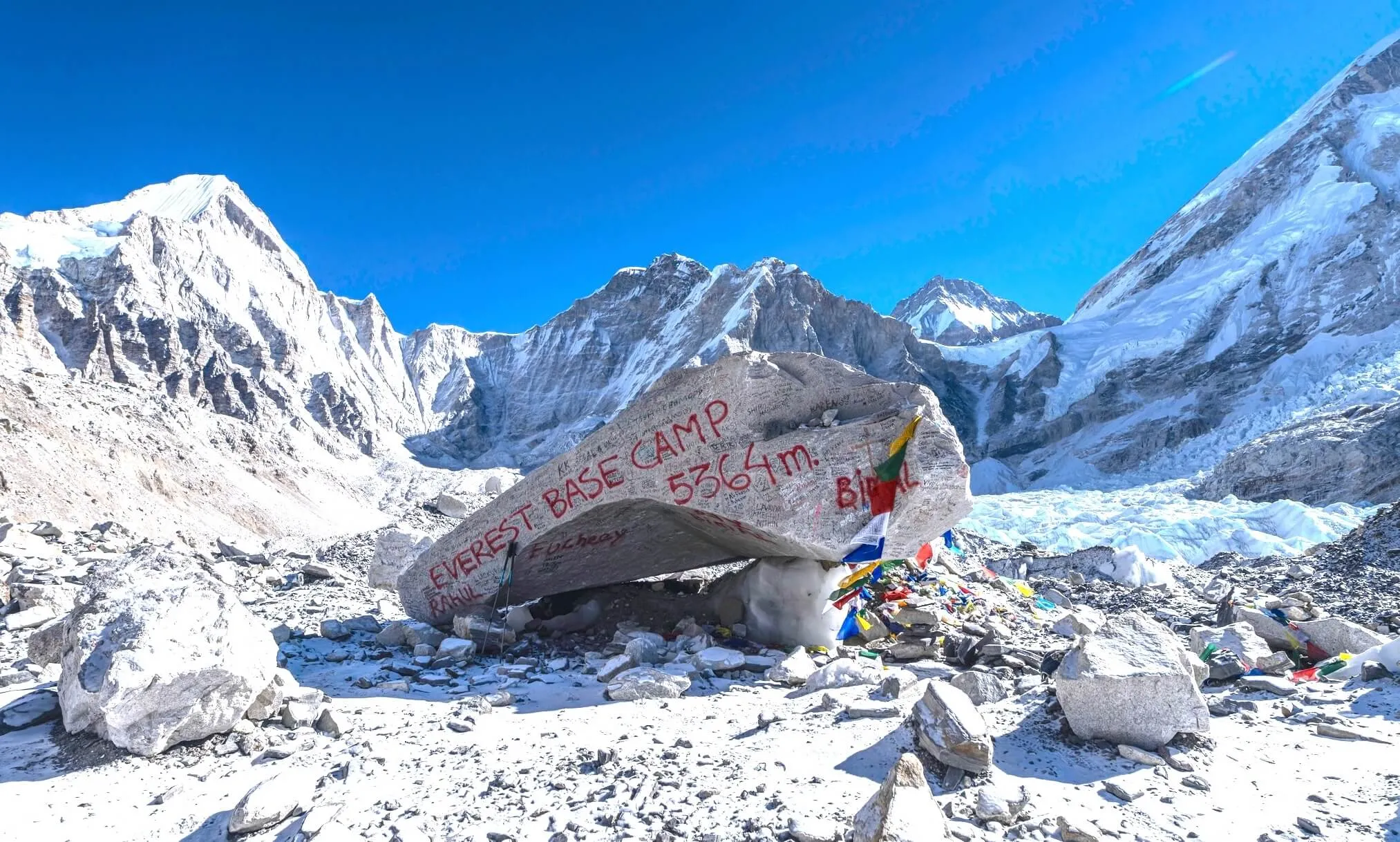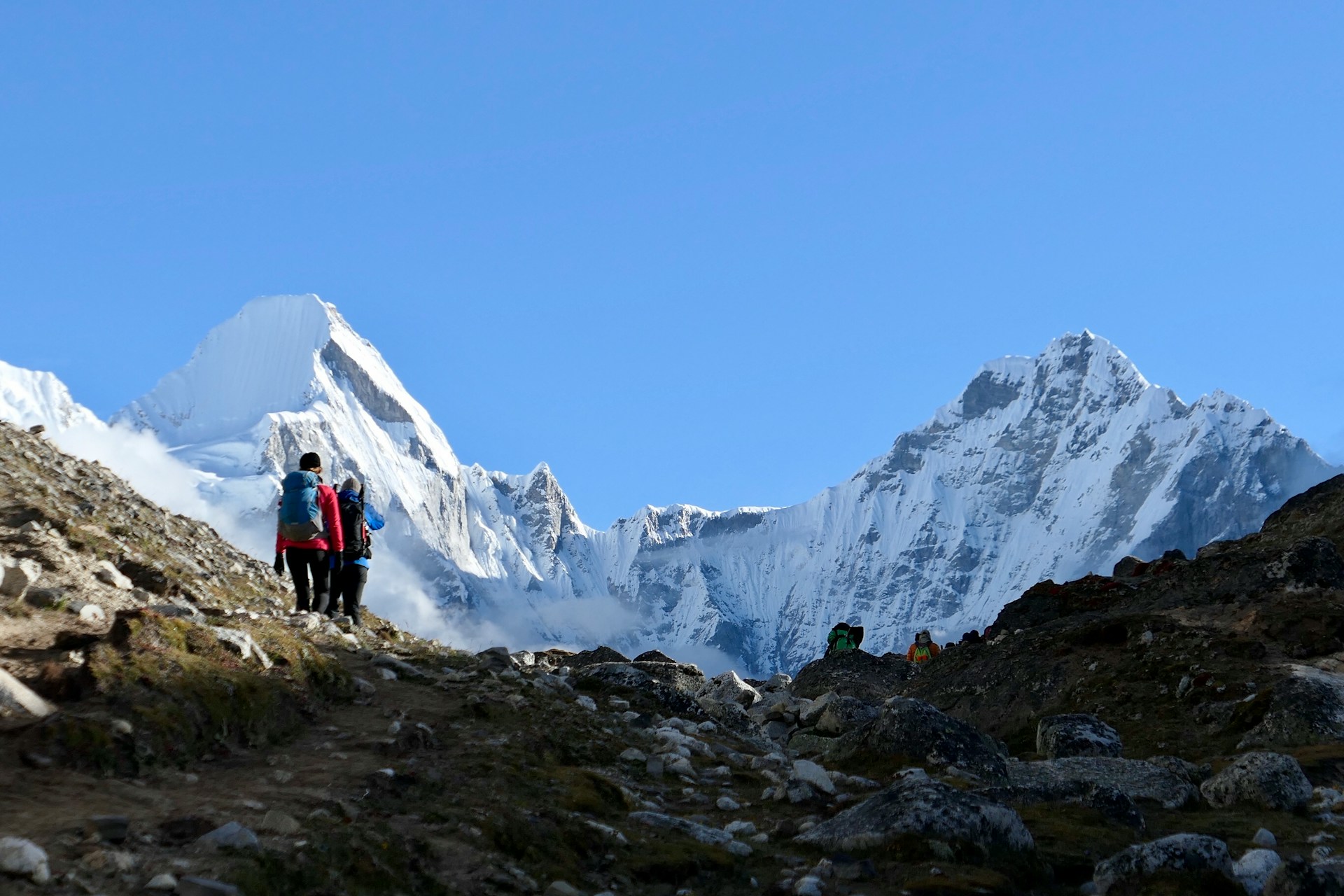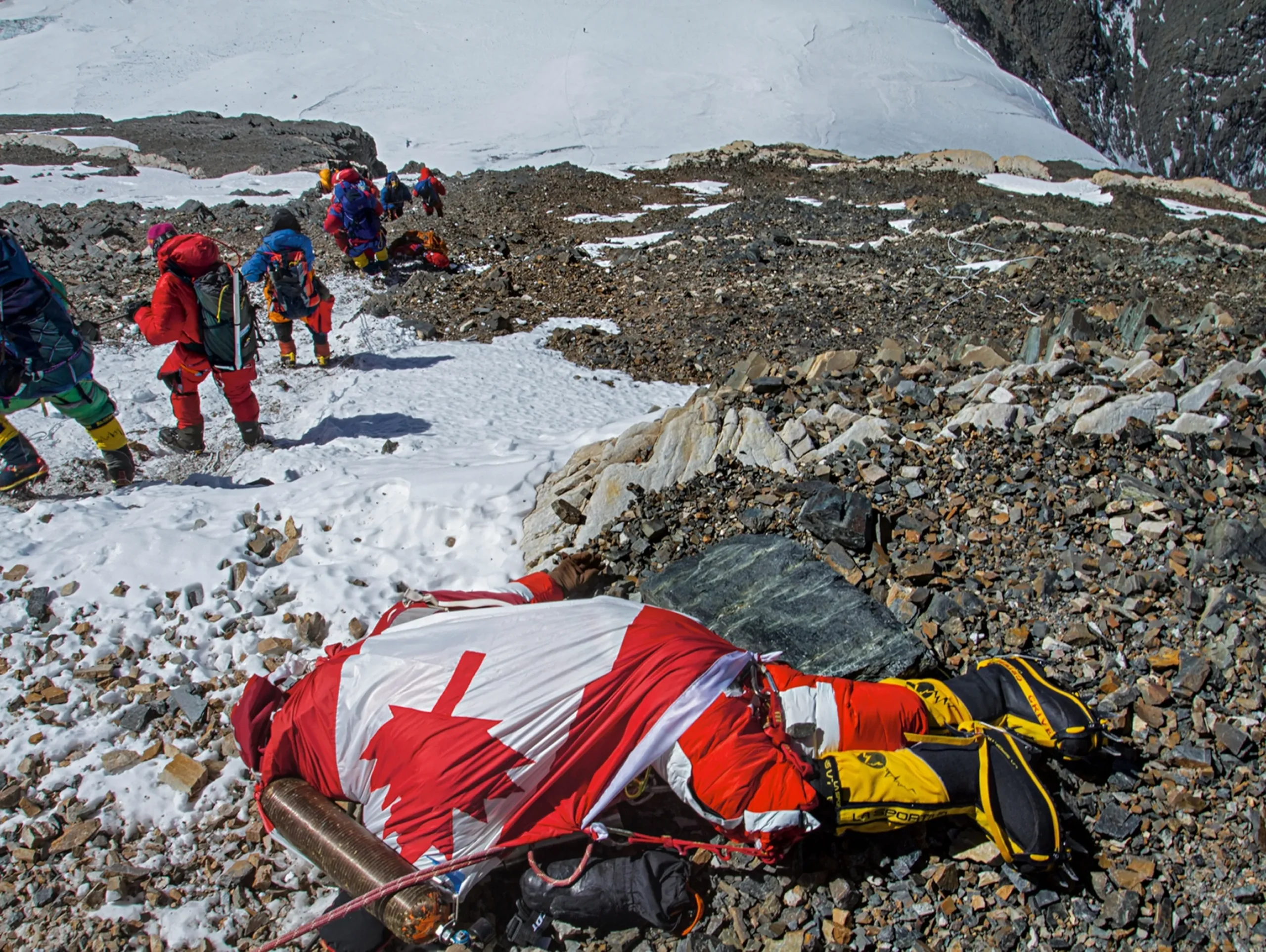For many trekkers, the idea of navigating the Himalayas alone can be daunting, while others prefer the independence of a solo trek. Understanding the benefits and challenges of both guided vs unguided treks is crucial.
When considering a guided Everest Base Camp trek, you’ll gain not only local insight but also an added layer of safety. Guides are knowledgeable about the terrain, weather conditions, and potential hazards, making the journey smoother.
On the other hand, opting for a solo trek allows for a more personalized pace and experience. However, it’s essential to weigh this against the potential risks and challenges.
Understanding the Everest Base Camp Trek
Trekking to Everest Base Camp is a once-in-a-lifetime experience that demands preparation, resilience, and a good understanding of the terrain. The journey from Lukla to Everest Base Camp is a challenging yet exhilarating adventure that takes you through diverse landscapes and cultural experiences.
What to Expect on the Journey from Lukla to Base Camp?
The trek from Lukla to Everest Base Camp is approximately 38.5 kilometers one way and involves a gradual ascent to higher altitudes. Trekkers can expect to pass through picturesque villages, rhododendron forests, and rugged terrains, with the scenery becoming more breathtaking as they ascend. The trail is well-marked, but it’s essential to be prepared for variable weather conditions.
Typical Duration and Difficulty Level
The typical duration for the Everest Base Camp trek is around 12-14 days, depending on the trekker’s pace and acclimatization needs. The difficulty level is considered moderate to challenging due to the high altitude and potential weather extremes. Adequate physical preparation and acclimatization are crucial to tackling the trek successfully.
Best Seasons for Trekking to EBC
The best seasons for trekking to Everest Base Camp are spring (March to May) and autumn (September to November). These periods offer relatively stable weather, clear skies, and comfortable temperatures, making the trekking conditions optimal. Spring is particularly popular due to the blooming rhododendrons, while autumn offers clearer mountain views.
Solo vs. Guided: Weighing Your Options for the Everest Base Camp Trek Guide
When planning your Everest Base Camp trek, one of the key decisions you’ll face is whether to go solo or hire a guide. This decision significantly impacts your trekking experience, affecting not just the logistics but also your safety and enjoyment.
Benefits of Hiring a Licensed Trekking Guide
Hiring a licensed trekking guide can greatly enhance your Everest Base Camp experience. Guides are knowledgeable about the terrain, weather conditions, and local culture, ensuring a smoother and more enjoyable journey. They are trained in first aid and can handle emergencies, providing an added layer of safety. A guide can also facilitate interactions with locals, enriching your cultural experience.
Advantages of Trekking Independently
Trekking independently offers a sense of freedom and flexibility that some adventurers cherish. Independent trekkers can set their own pace, stop when they please, and enjoy solitude. However, they must be well-prepared and knowledgeable about the route and potential hazards. Independent trekkers should be experienced and confident in their navigation skills.
Understanding the Difference: Guide vs. Porter
It’s essential to understand the difference between a guide and a porter. A guide leads the trek and provides information about the terrain, culture, and history, while a porter assists with carrying your luggage. Both roles are vital, but they serve different purposes. Guides are trained professionals who can handle emergencies and provide insights into the local environment.
Cost Comparison: Guided vs. Unguided Treks
The cost is a significant factor when deciding between a guided and an unguided trek. Guided treks are more expensive due to the cost of hiring a guide, but they offer value through enhanced safety and experience. Unguided treks are cost-effective but require more preparation and self-reliance. Budget-conscious trekkers should weigh the costs against the benefits of each option.
Essential Permits and Preparation for Trekking in Nepal
To ensure a smooth and enjoyable trek to Everest Base Camp, it’s vital to understand the necessary preparations and permits needed. Trekking in Nepal requires compliance with specific regulations and preparation to tackle the challenging terrain.
Required Documents: TIMS Card and Sagarmatha National Park Permit
Two essential documents for the Everest Base Camp trek are the TIMS (Trekker’s Information Management System) card and the Sagarmatha National Park permit. The TIMS card is crucial for tracking trekkers and ensuring their safety, while the Sagarmatha National Park permit is required for entering the national park area. Both can be obtained through registered trekking agencies in Kathmandu or at the Nepal Tourism Board office.
Physical Preparation for the Everest Base Camp Trek
Physical preparation is key to a successful Everest Base Camp trek. Cardiovascular training and strengthening exercises should be started at least 2-3 months prior to the trek. Acclimatization days are also crucial to prevent altitude sickness.
Essential Gear and Packing Recommendations
Packing the right gear is vital for a comfortable and safe trek. Essential items include sturdy hiking boots, layers for varying weather conditions, and a first-aid kit. It’s also recommended to bring a water purification system and high-energy snacks.
How Kathmandu Trekking Agencies Can Help with Planning?
Kathmandu trekking agencies play a significant role in simplifying the planning process. They can assist with obtaining the necessary trekking permits for EBC, arranging guides and porters, and organizing logistics. Their expertise ensures a well-planned and executed trek.
Safety Considerations for the Everest Base Camp Trek
Ensuring safety is crucial when embarking on the Everest Base Camp trek, one of the most challenging treks in the Himalayas. The trek involves navigating through rugged terrain, high altitudes, and unpredictable weather conditions, making safety a top priority.
Altitude Sickness: Recognition, Prevention, and Treatment
Altitude sickness is a significant risk on the Everest Base Camp trek. Recognizing the symptoms, such as headaches and nausea, is crucial. Prevention involves gradual ascent and staying hydrated. Treatment includes descending to lower altitudes and, in severe cases, medical intervention.
Navigation Challenges on the Trail
Navigating the trail to Everest Base Camp can be challenging due to the rugged terrain and potential snow or ice. Using a reliable map and guide or hiring a local guide can help mitigate these challenges. Trekkers should also be prepared for changing weather conditions.
Emergency Situations and Evacuation Procedures
In the event of an emergency situation, having a plan in place is vital. This includes knowing the evacuation procedures and having access to emergency services. Trekkers should be prepared for unexpected situations and know how to respond.
By understanding these safety considerations, trekkers can better prepare themselves for the challenges of the Everest Base Camp trek and ensure a safer, more enjoyable journey.
Conclusion: Making Your Decision About an Everest Base Camp Guide
Deciding whether to hire a guide for the Everest Base Camp trek depends on several factors, including your trekking experience, physical condition, and personal preferences. Hiring a licensed trekking guide from Nepal can enhance your experience, providing valuable insights into the local culture and environment. Local guides in Nepal are knowledgeable about the terrain, weather conditions, and potential hazards, ensuring a safer journey.
Trekking with a Nepali guide can also enrich your experience, as they share their expertise and stories about the region. If you prefer to trek independently, it’s essential to be well-prepared and informed about the trail, permits, and potential risks. An Everest Base Camp guided trek offers the benefits of guided navigation and emergency assistance, while an independent trek to Everest Base Camp allows for flexibility and self-discovery.
Ultimately, careful planning and preparation are crucial for a successful and enjoyable trek. Weighing the benefits of a guided trek against the freedom of independent trekking will help you make an informed decision that suits your needs.
FAQ
Do I need a guide to trek to Everest Base Camp?
While it’s possible to trek to Everest Base Camp independently, hiring a licensed trekking guide is highly recommended due to the challenging terrain, altitude sickness risks, and navigation complexities.
What is the role of a trekking guide in Nepal?
A trekking guide provides navigation assistance, ensures safety, offers cultural insights, and helps with emergency situations, making the trekking experience more enjoyable and secure.
How do I hire a trekking guide or porter in Nepal?
You can hire a trekking guide or porter through reputable Kathmandu trekking agencies, which can provide licensed and experienced guides and porters for your Everest Base Camp trek.
What are the benefits of hiring a guide for the Everest Base Camp trek?
Hiring a guide enhances your safety, provides valuable cultural insights, and helps navigate the challenging terrain, making the trek more enjoyable and stress-free.
Can I trek to Everest Base Camp solo?
Yes, solo trekkers can attempt the Everest Base Camp trek, but it’s crucial to be well-prepared, have necessary permits, and consider hiring a guide or joining a guided group for added safety.
What permits are required for the Everest Base Camp trek?
Trekkers need to obtain a TIMS card and a Sagarmatha National Park permit to trek to Everest Base Camp, which can be arranged through Kathmandu trekking agencies or local authorities.
How difficult is the Everest Base Camp trek?
The Everest Base Camp trek is considered moderately challenging due to the high altitude, steep ascents, and unpredictable weather conditions, requiring a good level of physical fitness and preparation.
What is the best time to trek to Everest Base Camp?
The best seasons for trekking to Everest Base Camp are spring (March to May) and autumn (September to November), when the weather is relatively stable and clear.
How can I prepare physically for the Everest Base Camp trek?
To prepare physically, engage in cardiovascular exercises, build endurance, and acclimatize to high altitudes, ensuring you’re well-prepared for the challenging trek.
What are the signs and symptoms of altitude sickness?
Altitude sickness symptoms include headaches, nausea, fatigue, and dizziness; if you experience these, it’s essential to descend to a lower altitude and seek medical attention if they persist.



